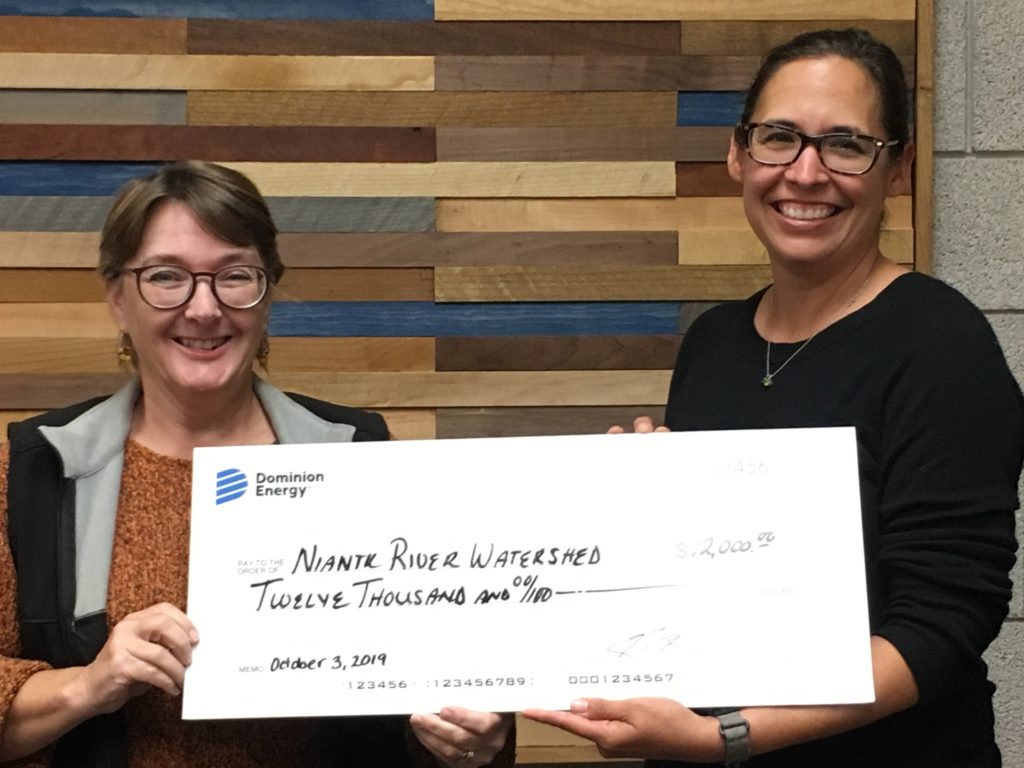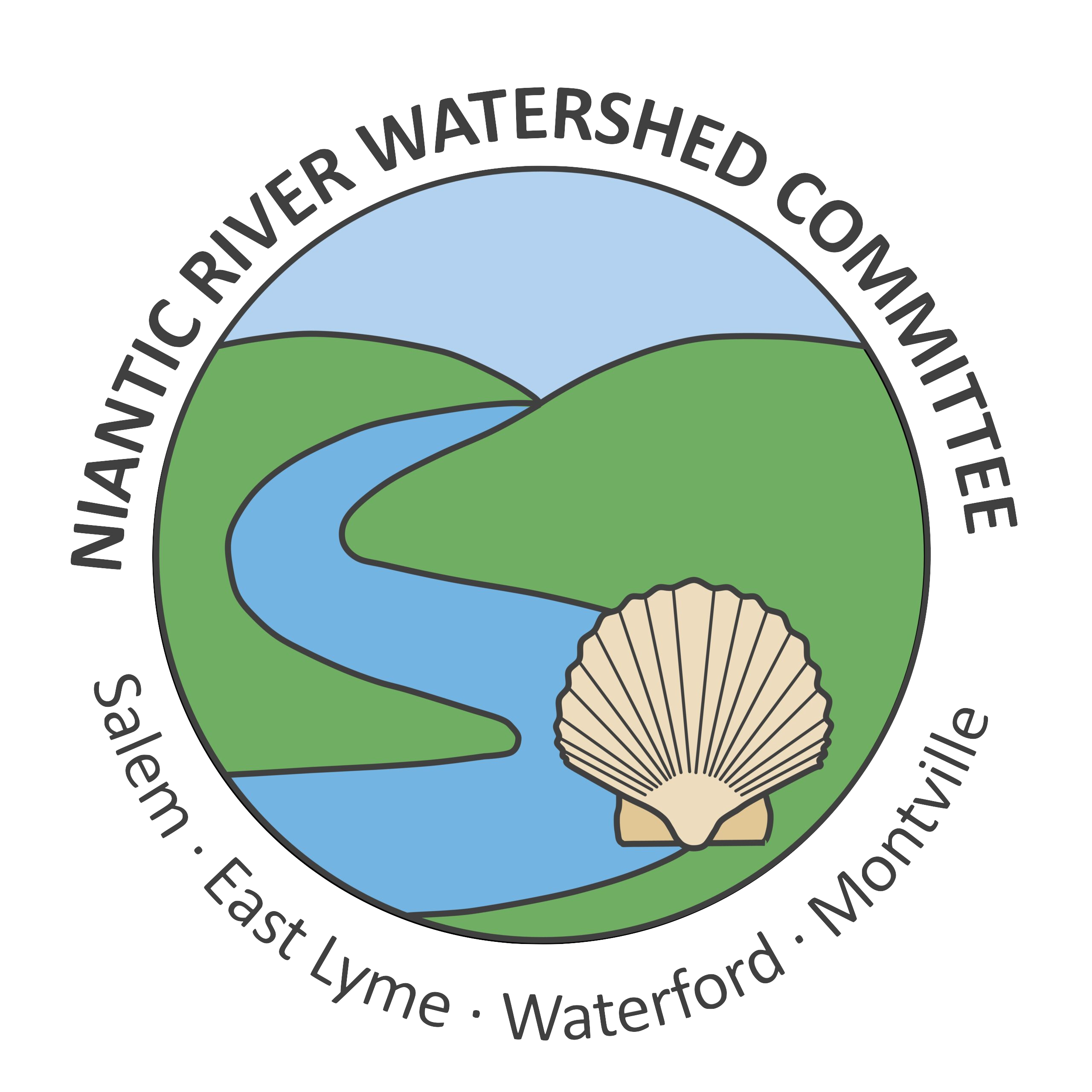
NRWC Watershed Coordinator Judy Rondeau receives a check from Susan Gonzales of the Dominion Energy/Millstone Environmental Lab. The funding, which was awarded by the Dominion Energy Charitable Foundation’s Environmental Stewardship grant program, will support NRWC programs, including public education and outreach, water quality monitoring and water quality improvement projects. NRWC will use a portion of the funds to replace our aging water quality sampling equipment.
Water quality monitoring is a key component of our programs. We sample nitrate-nitrogen (N-NO3) levels in Latimer Brook, which drains approximately 2/3 of the Niantic River watershed land area into the Niantic River. Nitrogen is a key plant nutrient in salt waters like the Niantic River, and is a food source for both micro-algae and seaweed. Excess levels of nitrogen can result in algae blooms, which are harmful to the aquatic animals living in the Niantic River. When algae dies, it sinks to the bottom of the river, where it is decomposed by bacteria. The bacteria use oxygen in this process, and and can create conditions where oxygen levels in the water become dangerously low, imperiling aquatic animals.
N-NO3 is produced during the natural breakdown of organic materials like grass, leaves and other plant materials. It can also come from manure, fertilizer and septic systems. By monitoring levels of N-NO3 in Latimer Brook, NRWC can determine if levels are higher than those that could be expected in a natural condition. Documenting N-NO3 levels helps us to identify opportunities for public outreach and target areas where the installation of stormwater management practices would be beneficial.
